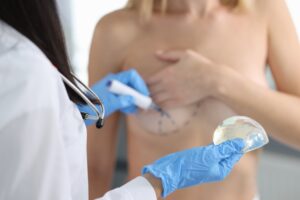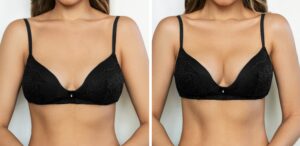Fat Transfer to Breasts: The Pros and Cons of a Safer Alternative to Breast Implants
Breast augmentation has long been the most popular cosmetic producer, but in 2023 liposuction overtook the boob jobs spot. In fact, implant removal surgery grew by almost 50% globally in the past four years. A report done by The International Society of Aesthetic Plastic Surgery linked this trend to the discovery of Breast Implant Associated Lymphoma, which is a cancer of the immune system. There’s also a risk of capsular contracture as the body adjusts to implants.
But, thanks to developments in plastic surgery techniques, there are still options to enhance the shape and size of  breasts. One popular technique in Los Angeles is autologous fat transfers, which is simply a form of fat grafting where the tissue is obtained from the same individual that’s having the procedure. Fat transfers to the breasts are effective in achieving the same desired results as implant surgery. Surgeons use liposuction to target the stomach, thighs, hips, back, or arms and then inject those fat cells into the breasts. It takes about six months to see the final results as the fat cells settle into place.
breasts. One popular technique in Los Angeles is autologous fat transfers, which is simply a form of fat grafting where the tissue is obtained from the same individual that’s having the procedure. Fat transfers to the breasts are effective in achieving the same desired results as implant surgery. Surgeons use liposuction to target the stomach, thighs, hips, back, or arms and then inject those fat cells into the breasts. It takes about six months to see the final results as the fat cells settle into place.
In addition to avoiding the risk of cancer that’s linked to breast implants, fat transfers to the breasts have numerous benefits and less risks when compared to implant surgery. Pros to fat transfers include:
More natural looking results because there is no insertion of a foreign object.
Mostly permanent results without needing replacement surgery like with implants.
Tissue expansion is not necessary pre-surgery.
Results also include slimming of areas where the fat was harvested from.
Mammograms still work well after the procedure with tumors easily visible.
However, like all cosmetic procedures, there are risks that come with the surgery. Cons to fat transfers to the breasts include:
To be a candidate for the surgery, patients must have enough body mass and excess fat to harvest.
Risks of necrosis, infection, and benign breast cysts.
Less flexibility in final breast size as fat transfers can only increase by one or two sizes. Patients may need multiple procedures to achieve the desired size.
Sagging of the breasts may occur overtime as fat transfers only increase the size and perfect shape.
Once the decision to use fat transfers to enhance the size and shape of the breast is made, being prepared for the recovery period is the next important step. After the procedure, patients are expected to wear elastic bandages as bindings on top of a surgical bra as the fat deposits adjust to their new location. Normal side effects to expect are pain, bruising, swelling, and discomfort both in the breasts and in the liposuctioned areas. And, of course, patients are prescribed pain relievers and antibiotics as needed. Fat transfer to the breast recovery time is about one to three weeks, with strenuous activity restricted during the first week.
 According to published fat graft retention rates, there’s a 50-90% chance of the fat cells surviving, meaning it’s necessary to have a skilled surgeon who can minimize the time the cells are outside the body and maximize how many cells are preserved. Dr. Barrett’s Beverly Hills fat transfers to the breasts utilizes his expertise to reconstruct the shape and weight of the breast based on the patient’s specific body type. As one of the best fat transfer to breast augmentation surgeons, his procedure provides two-in-one results with a slimming effect and new, beautiful breasts without the hassle of implants
According to published fat graft retention rates, there’s a 50-90% chance of the fat cells surviving, meaning it’s necessary to have a skilled surgeon who can minimize the time the cells are outside the body and maximize how many cells are preserved. Dr. Barrett’s Beverly Hills fat transfers to the breasts utilizes his expertise to reconstruct the shape and weight of the breast based on the patient’s specific body type. As one of the best fat transfer to breast augmentation surgeons, his procedure provides two-in-one results with a slimming effect and new, beautiful breasts without the hassle of implants




0